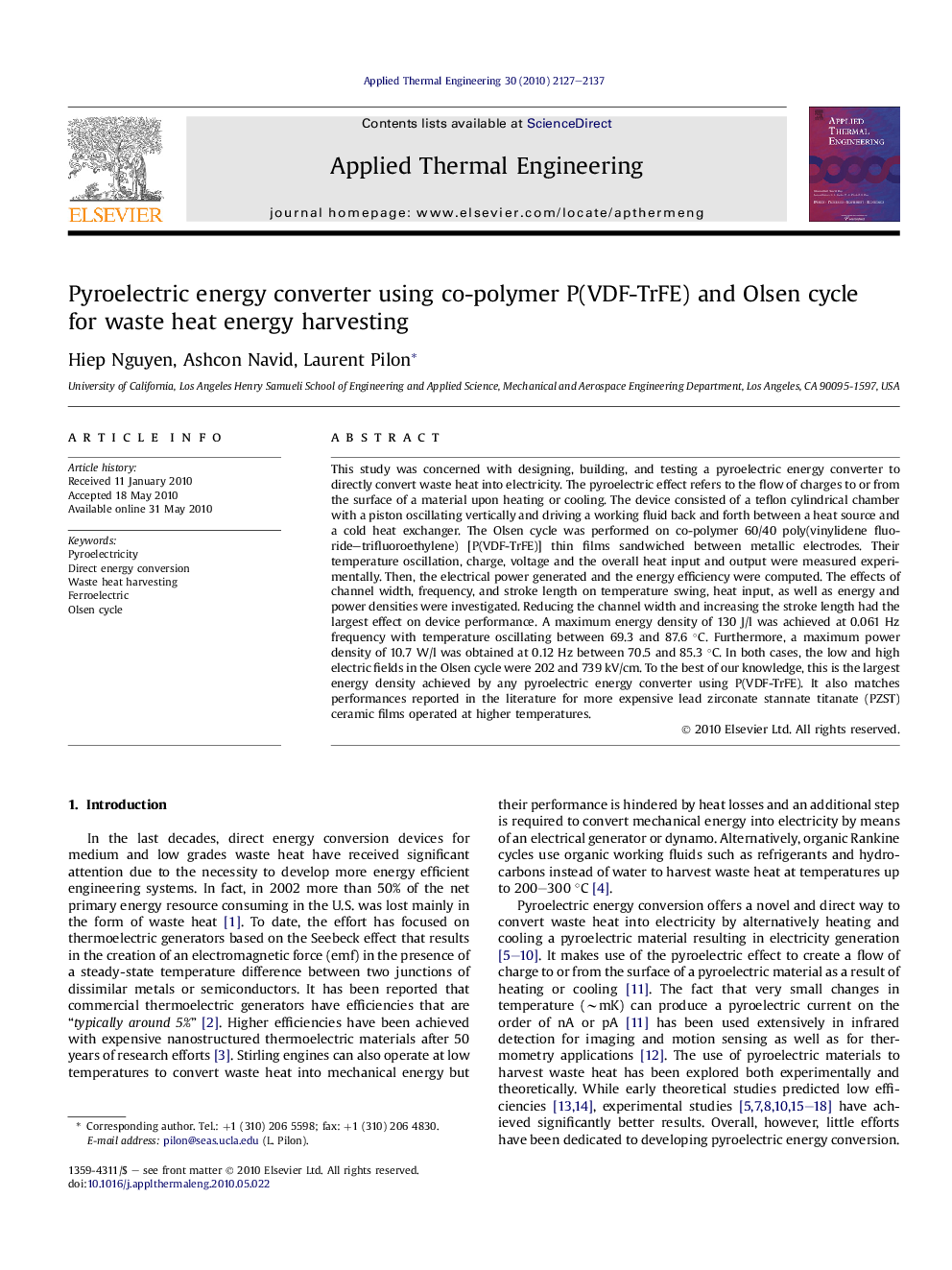| Article ID | Journal | Published Year | Pages | File Type |
|---|---|---|---|---|
| 648226 | Applied Thermal Engineering | 2010 | 11 Pages |
This study was concerned with designing, building, and testing a pyroelectric energy converter to directly convert waste heat into electricity. The pyroelectric effect refers to the flow of charges to or from the surface of a material upon heating or cooling. The device consisted of a teflon cylindrical chamber with a piston oscillating vertically and driving a working fluid back and forth between a heat source and a cold heat exchanger. The Olsen cycle was performed on co-polymer 60/40 poly(vinylidene fluoride–trifluoroethylene) [P(VDF-TrFE)] thin films sandwiched between metallic electrodes. Their temperature oscillation, charge, voltage and the overall heat input and output were measured experimentally. Then, the electrical power generated and the energy efficiency were computed. The effects of channel width, frequency, and stroke length on temperature swing, heat input, as well as energy and power densities were investigated. Reducing the channel width and increasing the stroke length had the largest effect on device performance. A maximum energy density of 130 J/l was achieved at 0.061 Hz frequency with temperature oscillating between 69.3 and 87.6 °C. Furthermore, a maximum power density of 10.7 W/l was obtained at 0.12 Hz between 70.5 and 85.3 °C. In both cases, the low and high electric fields in the Olsen cycle were 202 and 739 kV/cm. To the best of our knowledge, this is the largest energy density achieved by any pyroelectric energy converter using P(VDF-TrFE). It also matches performances reported in the literature for more expensive lead zirconate stannate titanate (PZST) ceramic films operated at higher temperatures.
